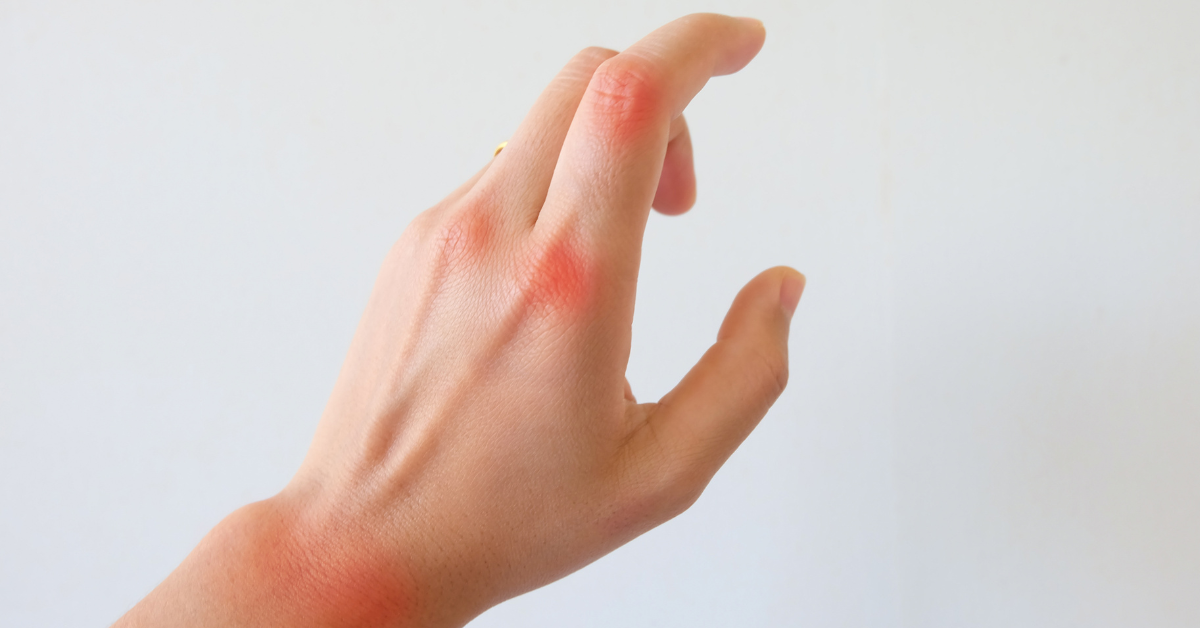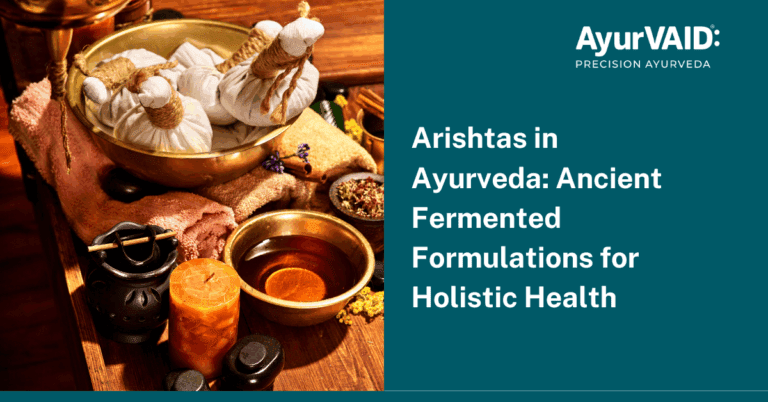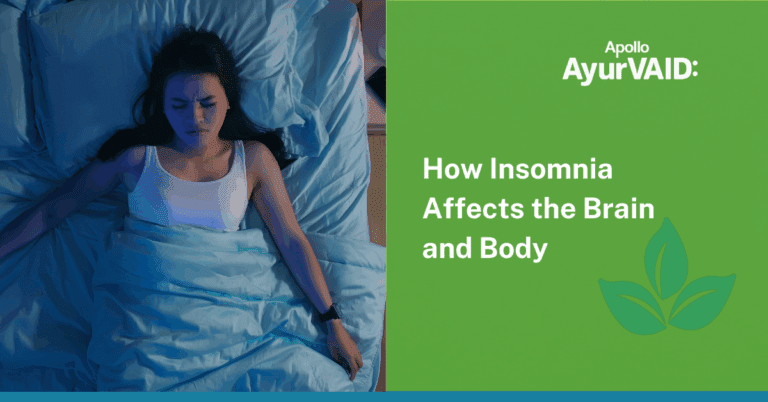The onset of Rheumatoid Arthritis may be so gradual that morning stiffness, mild joint pain, or the intangible feeling of fatigue seem to be mere weather changes – noticeable but easily disregarded. To many, including 51-year-old Jayanthi from Singapore, these early symptoms were part of natural ageing. It became evident that the discomfort lay outside the parameters of ageing after it progressed to a point of affecting everyday life.
Rheumatoid Arthritis is a chronic, inflammatory, autoimmune condition that could destroy joints and impair general health if left unchecked. Ayurveda considers Rheumatoid Arthritis as Amavata, a disease manifesting due to an imbalance in Vata and Kapha Dosha, especially in Sandhis (joints). Early detection and therapeutic intervention, in this context, may favourably alter the disease’s natural course. Therefore, in this blog, we look into the early signs of Rheumatoid Arthritis, its symptoms, complications, and their management with a keen eye on Ayurveda.

Rheumatoid Arthritis - Early Symptoms
Early signs and symptoms of rheumatoid arthritis can manifest with seemingly minor discomforts that often go unnoticed. Here are some early signs that Rheumatoid Arthritis can lead to seek early medical advice and embark on proper treatment. These include:
- Joint Pain and Stiffness – One of the most dramatic early symptoms of Rheumatoid Arthritis has been that of pain in the joints, often described as a deep ache or throb, usually accompanied by stiffness, mainly during the mornings or after periods of inactivity, lasting for more than one hour. Smaller joints, such as those in the fingers and wrists, are often the first ones to be affected.
- Swelling and Tenderness: The swelling is caused by the inflammation in the lining of the joint (synovium). The swollen joints feel warm and tender to touch. The swelling is usually symmetrical, affecting the same joints on the other side of the body as well.
- Fatigue: More fatigue and a fuzzy feeling inside before developing the joint pain are common early signs of Rheumatoid Arthritis.
- Low-Grade Fever and Loss of Appetite: A low-grade fever with a decreased appetite can be found in some individuals between two and four weeks after the onset of Rheumatoid Arthritis.
The earliest signs and symptoms of Amavata, according to Ayurveda texts, are as follows:
- Sandhiruk: Pain in joints that is persistent and painful, and is always on both sides.
- Stabdhata: Morning stiffness that decreases as movements resume, with initial difficulty in the day’s activities.
- Sandhishotha: There is inflammation and swelling around the affected joints, which is usually accompanied by warmth and tenderness.
- Alasya: An ever-present second sensory experience to the consciousness of an individual, with low energy besides the usual associated signs of joint disease.
- Aruchi: Diminished appetite, which achieves insidious gradual weight drawdown and malaise.
- Gaurava: Heavy feeling or sluggishness reflecting systemic involvement due to the accumulation of metabolic toxins.
They do signify the first signs of imbalance in Vata and the accumulation of Ama (metabolic waste). Early recognition and timely interventions are very important to enhance the stages of progression or complication of Amavata.
Complications of Rheumatoid Arthritis
If Rheumatoid Arthritis is not carefully handled, it can lead to complications, primarily in the joints, and include complications in other organ systems.
Some complications of Rheumatoid Arthritis are:
- Deformities and Destruction of Joint Tissues: Chronic joint inflammation can cause enough structural damage to the joints to deform them, such that they severely impair daily living activities.
- Pulmonary Complications: In addition to these, Rheumatoid Arthritis is also associated with respiratory conditions like interstitial lung disease and pulmonary nodules.
- Neurological Complications: Peripheral neuropathies and cervical spine involvement can occur.
- Cardiovascular Complications: Due to chronic inflammation in Rheumatoid Arthritis, heart diseases are expected to be higher.
- Ocular Complications: These are bicomponent dry-eye disease and corneal damage, ocular manifestations.
- Skeletal Complications: Osteoporosis and risk of fracture can develop.
- Debility: Chronic pain and inflammation render a person very incapable of functioning normally in society to a great extent and compromise much in terms of quality of life.
Ayurveda states that poor digestion and the accumulation of toxins will aggravate Rheumatoid Arthritis symptoms and will cause further complications. Joint deformities and crippling, getting debilitated, and systemic involvement, are the long-term effects of Amavata. The reconstruction aims to avoid these conditions by treating the cause of Ama by improving digestion.
Management of Rheumatoid Arthritis
Ayurveda has a complete and comprehensive approach concerning Amavata, addressing the disease genesis in depth. The primary aim is to balance the doshas in the body, especially Vata and Kapha, and eliminate Ama (metabolic toxins). Key aspects include:
- Panchakarma Therapies: These incorporate detoxifying and rejuvenating procedures such as Virechana (purgation) and Vasti (enema). Shodhana (purification) therapy is regarded as the best initial treatment of Ayurveda to normalise Ama and balance the Doshas. Before the initiation of Panchakarma procedures, Snehana and Swedana are performed.
- Internal Medicines: Ayurveda internal medicines with Tikta (bitter) and Katu (pungent) Rasa (taste), which improve digestion, eliminate Ama, reduce inflammation, and balance Vata and Kapha Doshas, are incorporated.
- Dietary Changes: According to Ayurveda, barley, horse gram, millet, ginger, garlic, and some other vegetables are beneficial. Avoiding heavy-to-digest foods, which worsen inflammatory conditions, such as curds, fish, jaggery, milk, black gram flour, paneer, and cheese, is recommended.
- Lifestyle Changes: Simple lifestyle recommendations include regular meal timings and enough sleep, mild exercise, avoiding cold and damp places, forceful suppression of natural urges, and staying awake late at night are also advised. Yoga poses like the Cat-Cow stretch and the Child’s pose can improve flexibility and relaxation.
The Ayurveda treatment method is distinctly individualised and also depends on the disease stage. In the early stage (Naveena Avastha), alleviation of pain and stiffness, correction of digestive imbalances, and arresting disease advancement are the treatment approaches.
Conclusion
Early detection of symptoms of Rheumatoid Arthritis helps establish an efficacious prompt management. Ayurveda recognises a comprehensive approach that considers inflammation, pain, and causes of both in preventing the consequences of Rheumatoid Arthritis and improving the lives of those afflicted with this chronic condition. Personalised treatment with combinations of therapeutic modalities, diet, and lifestyle changes aids in Rheumatoid Arthritis symptom management and overall health improvement.







